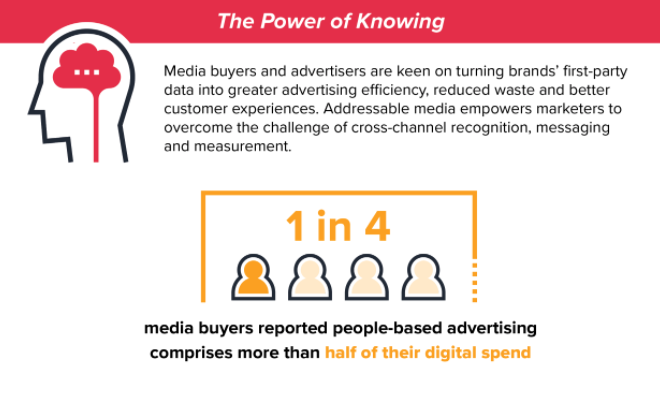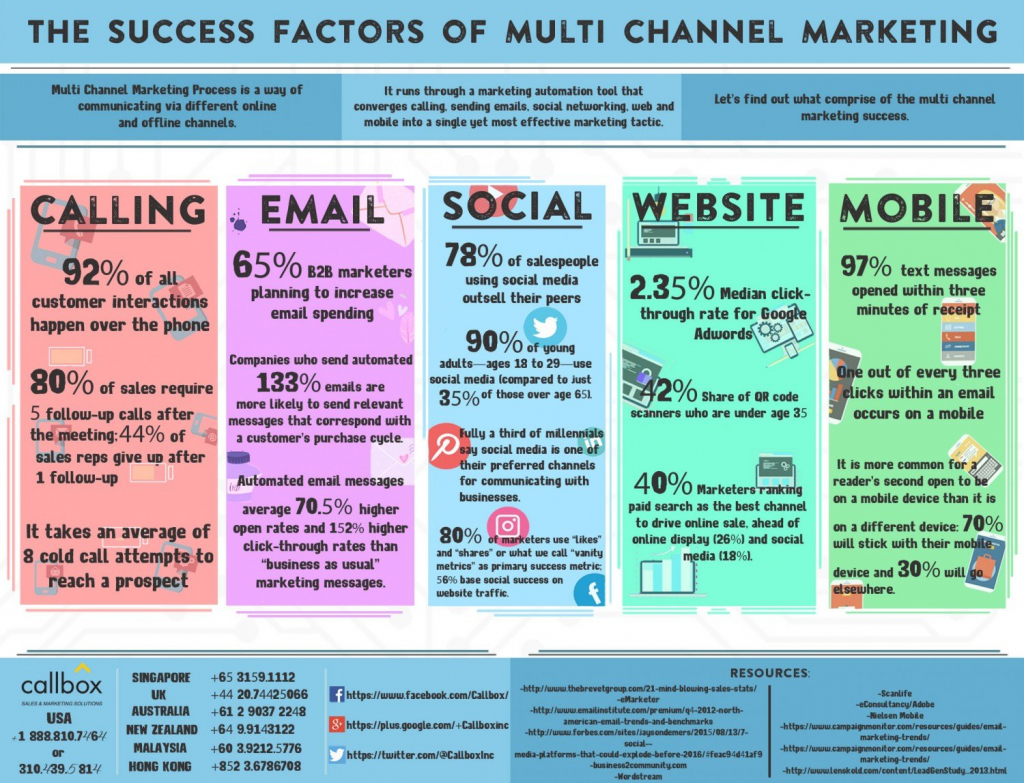Traditionally, marketing involved one of two approaches. The first was to broadcast your message far and wide so that your target audience would have the opportunity to see it online. Much of this was tailored, such as posting your ad on a parenting website if you sell products for babies. Some ads, on the other hand, focused on a less linear connection, such as posting the same ads on a bookstore website.
The second approach was cookie-based. This meant that based on browsing habits, companies would know where you liked to shop and the types of products you look at. It sounds great in theory, but it misses a huge part of the puzzle since cookie-based marketing can’t differentiate situations.
“A cookie, in and of itself, isn’t the problem,” explains Experian. “The problem is the linkage. How was a cookie associated with the person to whom the ad is being served? As marketers, we need to make sure that we are reaching the right people with the right ad, and more importantly not reaching those people who have opted out.”
Cookie-based marketing also produced false positives if you mistyped, clicked on something out of curiosity, or let someone use your computer.
Now, an additional type of marketing has come into use: people-based marketing.
What is people-based marketing?
Also called cross-device marketing, people-based marketing leverages technology to market to people across channels. Targeted ads are delivered on different devices and platforms based on user behavior. Most people and companies refer to it as people based marketing because the key is understanding the person behind it all that enables people based marketing to take place.

This distinction is important because consumer habits have changed with the development of new technologies. According to the Consumer Technology Association, a full 50 percent of people in the United States use a second screen while watching television.
For many of these people, the idea is to learn more about the program or movie they are watching (50 percent) or to occupy themselves during commercials (48 percent). But second screen behavior is not limited to television adjacent needs.
Around 43 percent of people are playing with social media while the TV is on and the figure rises to almost twice that (71 percent) when referring to adults 35 years of age and younger.
Viewing habits are evolving, and shopping behaviors are changing with them.
Enter multi-channel marketing
For example, a customer finds the perfect winter jacket while shopping online in early fall. She decides to hold off on purchasing, then the next week, she receives a raise, and then buys the jacket using her phone. She is a multi-channel shopper and most people – approximately two-thirds of shoppers – are just like her, using at least two channels to shop.
Multi-channel marketing is how you attract these people. Multi-channel marketing is interacting with would-be customers across different platforms. It includes everything from direct mail and catalogs to social media and email marketing.
The goal is to let your prospect interact with your business on whatever platform they would like AND make sure that their experience of your brand on that platform the same as they would experience on another.
Understanding cross-channel marketing
In multi-channel marketing, you are still talking about managing lots of different channels – and that can lead to inconsistencies. According to Google, as many as 90 percent of people switch between devices to complete a task.
If you were only using multi-channel marketing, your users would see similar ads between devices but not enjoy a seamless experience. Cross-channel marketing changes all that. It lets you create a personalized experience for users across devices.
Think of it as “constant connectivity.” Research shows that retargeting ads are 70 percent more likely to convert than those that do not retarget. In other words, you can target your users with ads that feature products they have already viewed and remind them of their interest in other channels that they may typically use most to make their purchases.
How does people-based marketing relate to cross-channel and multi-channel marketing?
People based marketing is about taking a smarter approach to these different channel approaches. Marketers need to create personalized messages that incorporate information from across channels and deliver a consistent message across all platforms.
In fact, prospects are considerably more likely to give that email address or buy that book when the marketing they receive is personalized to them as individuals – and the data backs that statement up. Infosys found that almost 60 percent of shoppers look on personalized marketing messages favorably and that customization often does influence whether they make a purchase or not.
Your business should always strive to produce a consistent experience across channels. This way, prospective customers learn what to expect from your company as a brand. To do this efficiently, you need a marketing campaign that is consistent in everything from font to color scheme.
This includes your website, any emails you send them, as well as using social media, and creating the sales funnel that uniquely takes all this into account for each user.
How does people-based marketing relate to post-click landing pages?
The primary purpose of any post-click landing page is to generate leads. It provides the final push to get that email signup, promote any content download you have available, sell a product, or request more information.
If your goal is to entice people to sign up for your ebook on marketing and your potential customer reaches your site by clicking on an ad for an SEO handbook, you don’t want to direct him or her to your home page where you are promoting your newest book on targeting by demographic. You want that person to see SEO.
To do this, present a post-click landing page that shows the ebook in question and provides a call to action to close the sale. This should be done for each ad because you need to be able to offer a tailored message and post-click landing pages give you that flexibility.
Not all post-click landing pages are trying to close a sale, but each post-click landing page should have only one goal. (Click here to learn more about why every promotion needs its own post-click landing page.)
People based marketing puts a different spin on traditional post-click landing pages. In this approach, you need to make sure that post-click landing pages mesh well with user expectations. It should leverage the data you have from your interactions with the target client and parlay that into a finished message that fits. It needs to have the same look and feel as other ads, incorporate message match, but also provide more information. post-click landing pages are connected to ads, but they stand alone from your website, so they need to flow from one to the other in a way that is utterly seamless.
Targeting the right people on the right devices at the right time
People-based marketing goes beyond a sales funnel and more towards leveraging context to predict customer behavior. It’s about targeting the right people on the right devices at the right time and doing so in a way that appeals to them uniquely and individually.
Programmatic technologies enable you to have more transparency in the channels you use for your business. They let you obtain more profound insights than simple analytics so that you learn more about how customers navigate your site and the type of content that speaks to them. Ultimately, this opens up improved and intuitive customer targeting that you can use to optimize your entire operation.
Head of digital marketing at credit card company MBNA Nic Travis explains:
Programmatic will increasingly become about audiences rather than cookies and pixels. In the end, it is about “helping people feel a bit better about marketing by delivering marketing that is more aligned with their wants, needs, and interests.
The less obtrusive your customers find your message, the more receptive they will be to what you are offering or selling.
People-based marketing is the most effective strategy for generating leads
Are you ready to learn more about how you can apply people based marketing to your business?
Build on cross-channel techniques to create a multi-channel experience for your customers that will make them want to come back for more and even help them look forward to your marketing content.
Instapage allows marketers to create beautiful, highly customizable post-click landing pages that can be used at any stage of the funnel, especially for people-based marketing campaigns. Request an Enterprise demo today.

See the Instapage Enterprise Plan in Action.
Demo includes AdMap™, Personalization, AMP,
Global Blocks, heatmaps & more.

